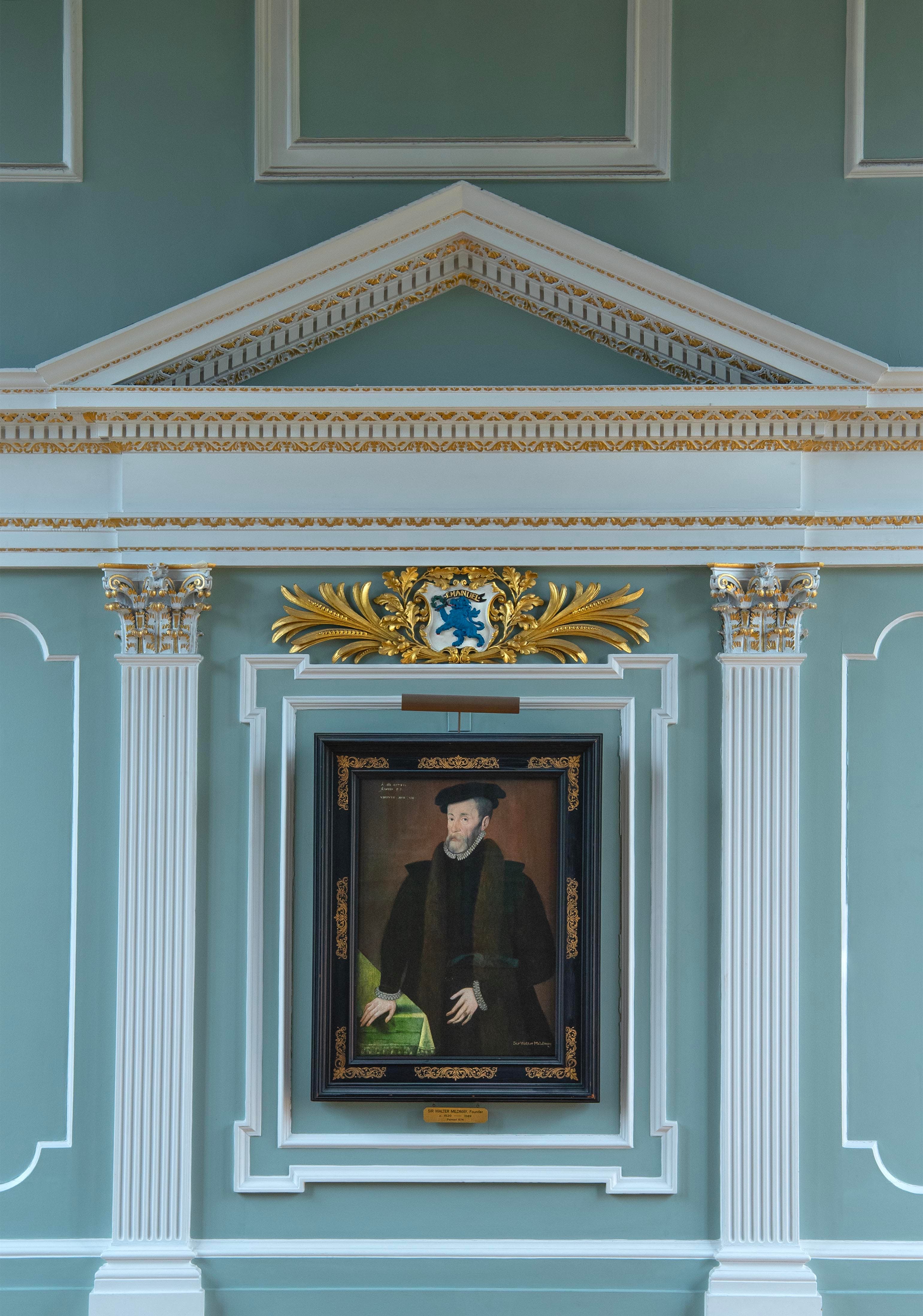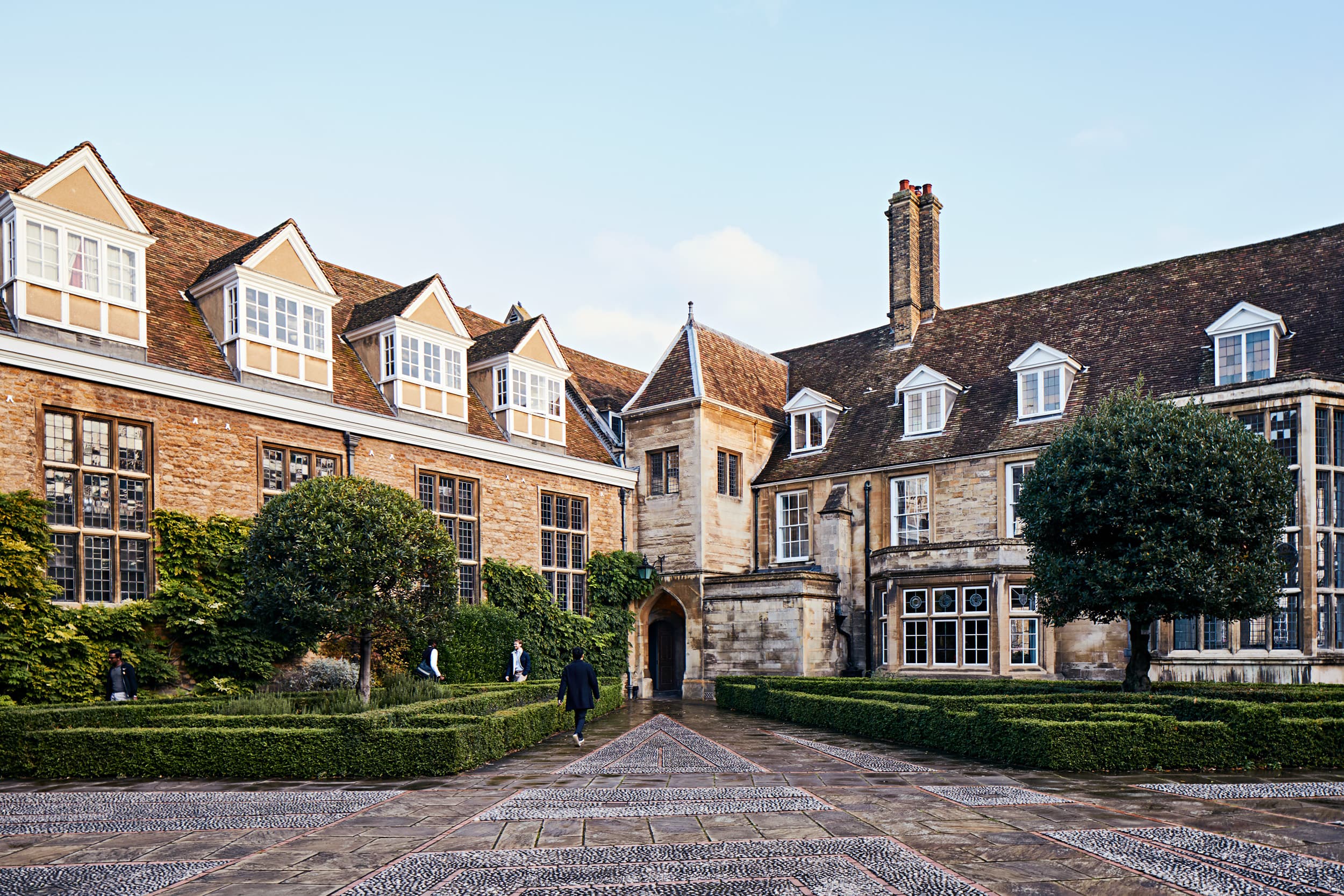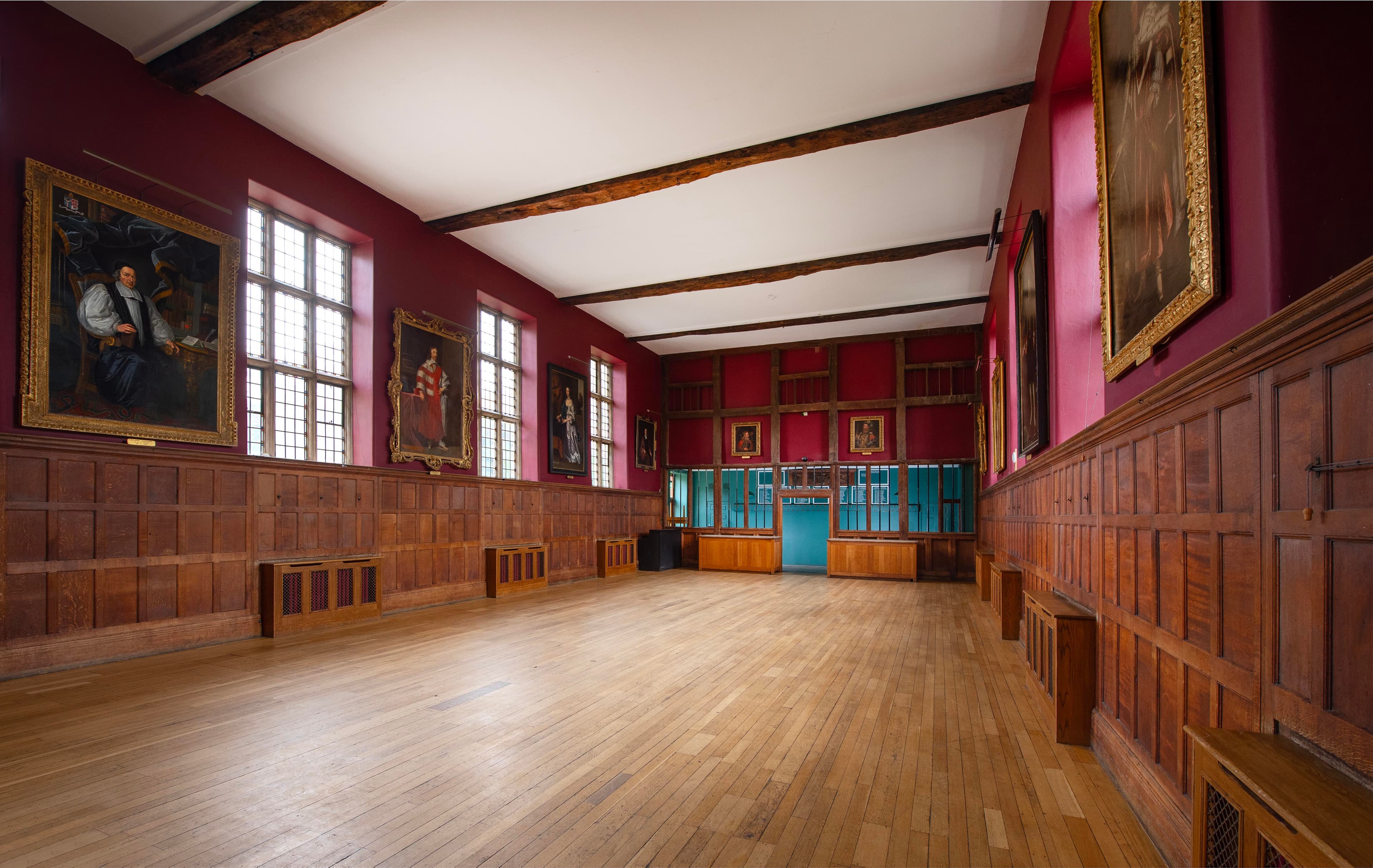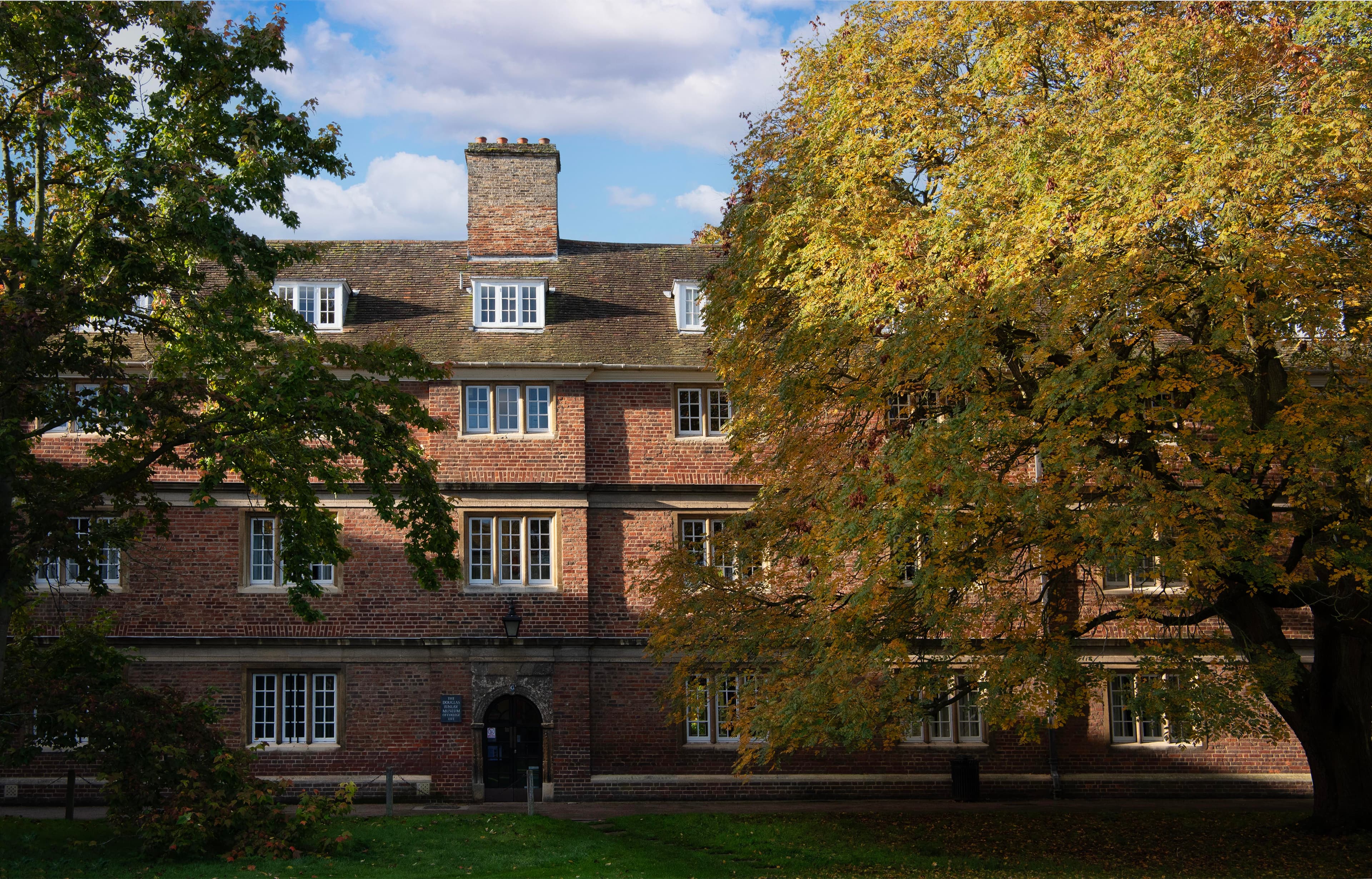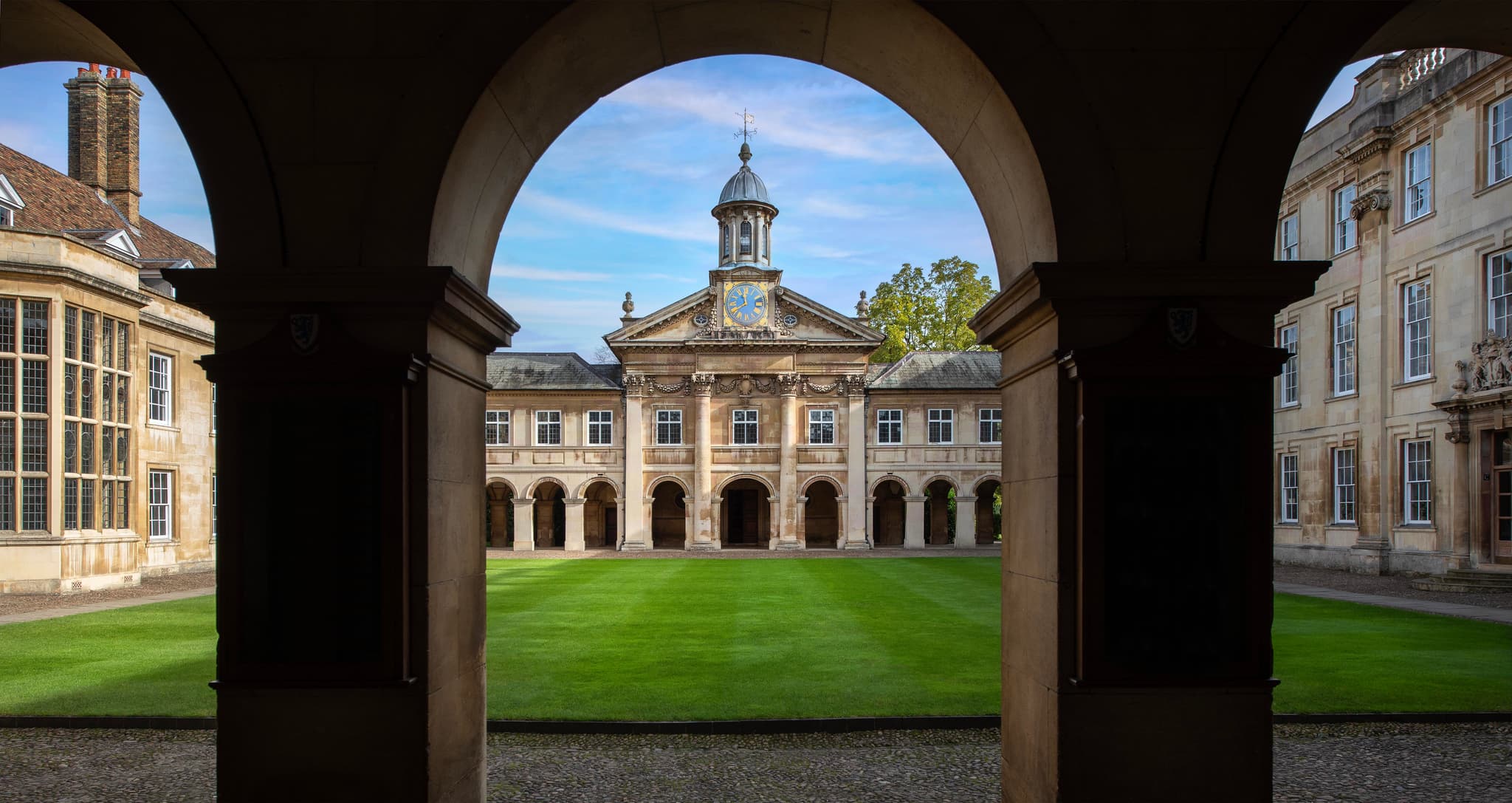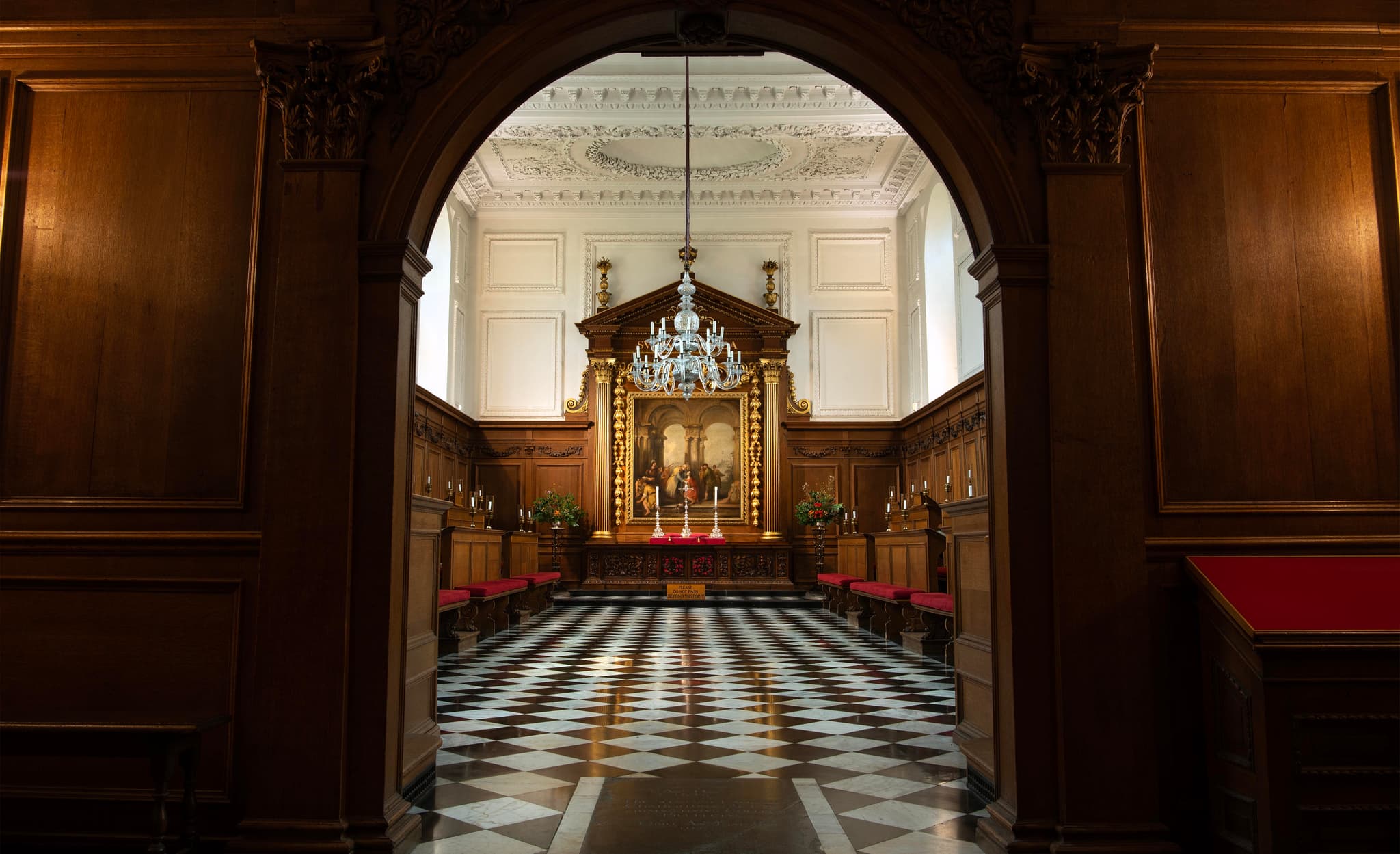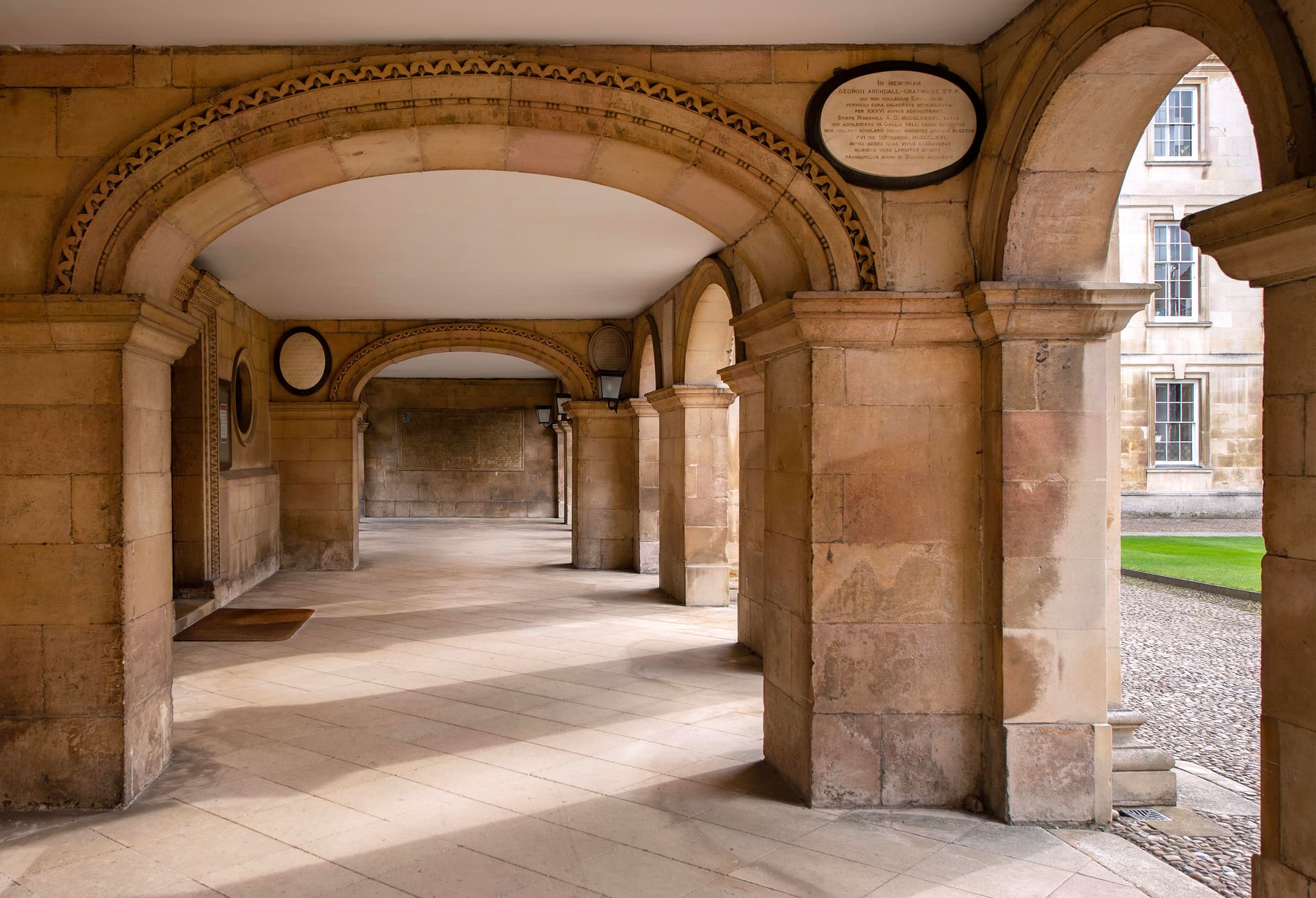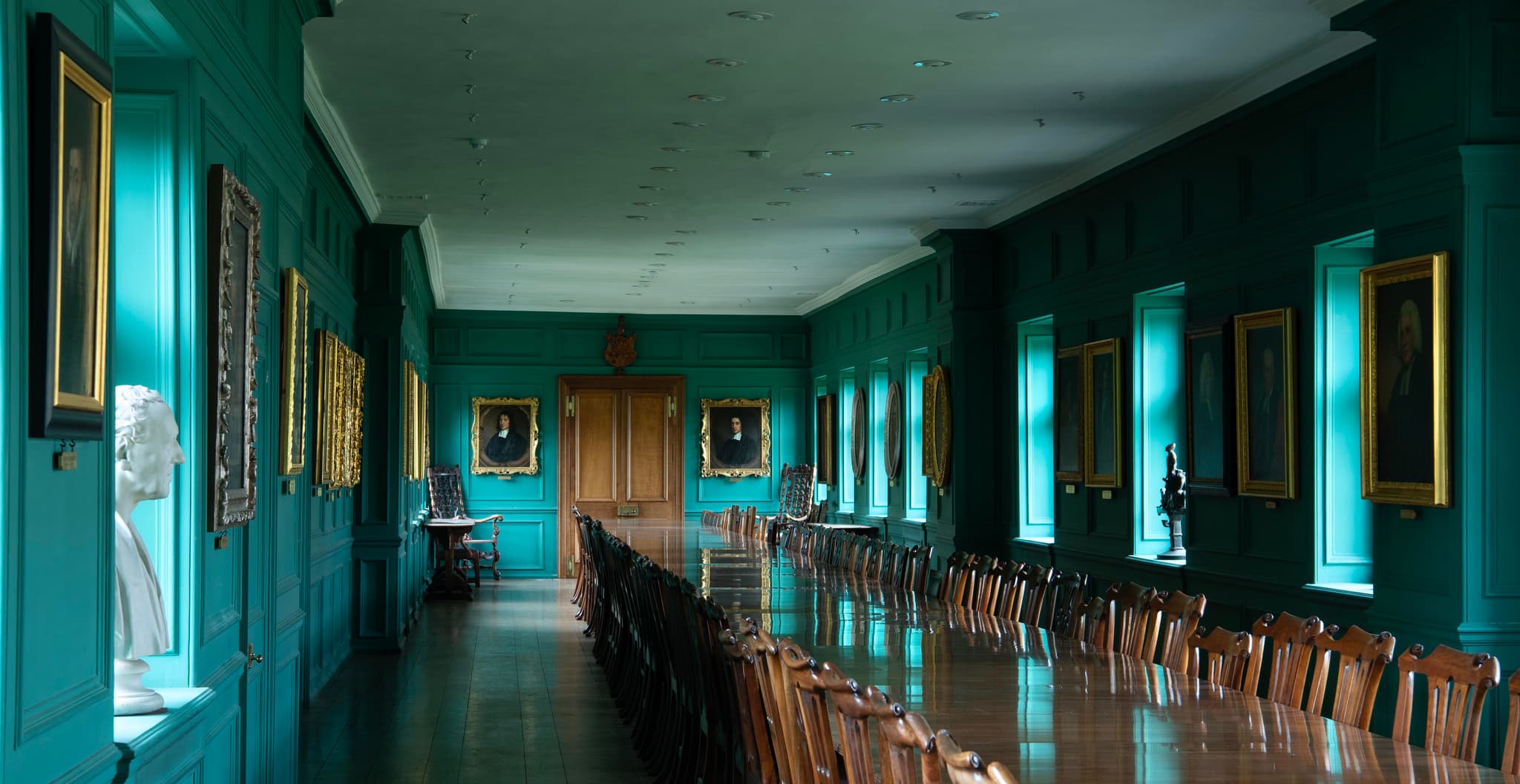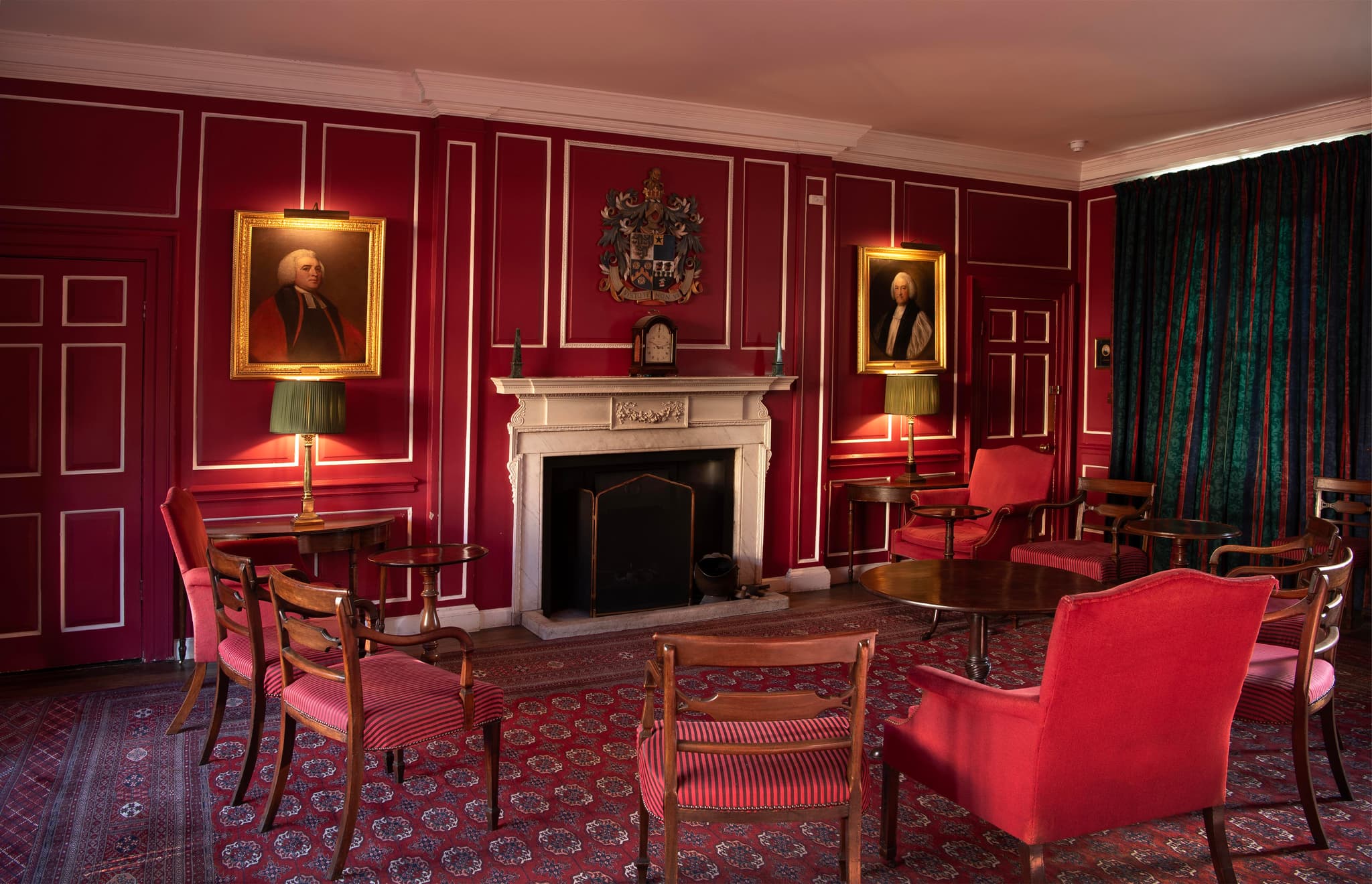Our History
Emmanuel College was founded in 1584 by Sir Walter Mildmay (c.1520–1589), on the site of a thirteenth–century Dominican friary. The son of a Chelmsford shopkeeper, Mildmay rose to high office in the reign of Elizabeth I, serving as her Chancellor of the Exchequer for thirty years. He was also a Privy Counsellor.
Sir Walter was a Protestant reformer, and he also cared deeply about education. His purpose in founding a new Cambridge college was to instruct young men for the priesthood, and so improve the quality of the Anglican clergy. This founding ethos led many Puritans to send their sons to Emmanuel, and student numbers grew quickly. By the 1630s, Emmanuel was one of the largest colleges in Cambridge. Many Emmanuel–educated Puritans emigrated to the North American colonies at this time, seeking freedom of worship. One such was John Harvard, who studied at Emmanuel between 1627 and 1635. He died in 1638, a year after settling in Massachusetts, but his financial bequest underpinned the foundation of Harvard University, with which institution Emmanuel College continues to enjoy strong links.
“I have set an Acorn, which when it becomes an Oake, God alone knows what will be the fruit thereof”
By no means all Emmanuel members were Puritans, and by the 1630s several of its students and academics were at the forefront of an influential group of humanist academics now known as the Cambridge Platonists. They preached an enlightened, rational view of Christianity. Student numbers fell during the English Civil War, but college life revived in the 1660s under the mastership of William Sancroft, later Archbishop of Canterbury. He commissioned his friend Christopher Wren to design a new chapel for Emmanuel. Consecrated in 1677, the building is a fine example of the English Baroque style.
In the eighteenth century, a prolonged rebuilding programme transformed the college’s appearance. Some of the Elizabethan ranges were extensively altered, and the range of medieval Dominican buildings fronting St Andrew’s Street was demolished, to be replaced with the elegant Classical frontage familiar to students and visitors today. The ‘new look’ raised Emmanuel’s profile, and during the mastership of Richard Farmer (1775–1797) it became the most socially fashionable college in Cambridge. One of Emmanuel’s most illustrious members, the renowned polymath Thomas Young, was admitted during this time.
Emmanuel underwent far-reaching changes in the second half of the nineteenth century. Undergraduate numbers tripled, from about 65 undergraduates in 1870 to 165 in 1895. New buildings were erected to house these students. Academic standards were also raised. The character of the college’s governing body gradually changed during the late nineteenth century, after the statutes requiring all Fellows to be unmarried, and the senior ones to be ordained, were amended. Female students (and Fellows) were admitted from the late 1970s and quickly made up half of the student body. Emmanuel College is a thriving academic institution of high repute and attracts students from around the world. It currently has about 500 resident undergraduates, 200 graduates and some 100 Fellows.

